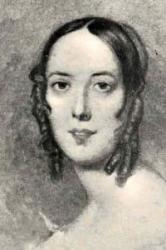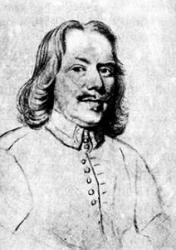Planning worship?
Check out our sister site, ZeteoSearch.org,
for 20+ additional resources related to your search.
- |
User Links
Search Results
A ddaethost Ti yn Serch di-gêl (And art Thou come with us to dwell)
Author: D. G.; D. H. Appears in 10 hymnals Used With Tune: BRECON
A ddaethost Ti yn Serch di-gêl (And art Thou come with us to dwell)
A debtor to mercy alone
Author: A. M. T. Appears in 101 hymnals Used With Tune: SALOME
A debtor to mercy alone
A fynno'n wrol fod (He who would valiant be)
Author: J. Bu.; D. H. Appears in 149 hymnals Used With Tune: ST. DUNSTAN'S
A fynno'n wrol fod (He who would valiant be)
ST. DUNSTAN'S
Appears in 39 hymnals Composer and/or Arranger: Winfred Douglas First Line: A fynno'n wrol fod (He who would valiant be) Tune Key: G Major Incipit: 11512 34313 21151 Used With Text: A fynno'n wrol fod (He who would valiant be)
ST. DUNSTAN'S
A ddaethost Ti yn Serch di-gêl (And art Thou come with us to dwell)
Author: D. G.; D. H. Hymnal: MAC1952 #154 (1952) Languages: English; Welsh Tune Title: BRECON
A ddaethost Ti yn Serch di-gêl (And art Thou come with us to dwell)
A debtor to mercy alone
Author: A. M. T. Hymnal: MAC1952 #143b (1952) Tune Title: SALOME
A debtor to mercy alone
A fynno'n wrol fod (He who would valiant be)
Author: J. Bu.; D. H. Hymnal: MAC1952 #87 (1952) Languages: English; Welsh Tune Title: ST. DUNSTAN'S
A fynno'n wrol fod (He who would valiant be)
Dora Greenwell

1821 - 1882 Person Name: D. G. First Line: A ddaethost Ti yn Serch di-gêl (And art Thou come with us to dwell) Hymnal Number: 154 Author of "A ddaethost Ti yn Serch di-gêl (And art Thou come with us to dwell)" in Mawl a chân = praise and song Greenwell, Dorothy, commonly known as "Dora Greenwell," was born at Greenwell Ford, Durham, in 1821; resided at Ovingham Rectory, Northumberland (1848); Golborne Rectory, Lancashire; Durham (1854), and Clifton, near Bristol, where she died in 1882. Her works include Poems, 1848; The Patience of Hope, 1861; The Life of Lacordaire; A Present Heaven; Two Friends; Songs of Salvation, 1874, &c. Her Life, by W. Dorling, was published in 1885.
-- John Julian, Dictionary of Hymnology
Dora Greenwell
John Bunyan

1628 - 1688 Person Name: J. Bu. First Line: A fynno'n wrol fod (He who would valiant be) Hymnal Number: 87 Author of "A fynno'n wrol fod (He who would valiant be)" in Mawl a chân = praise and song Bunyan, John. This great allegorist cannot be included amongst hymn writers, except on the ground that the piece, “He that is down needs fear no fall," from pt. ii. of his Pilgrim's Progress, 1684, is given in a limited number of hymnals. The son of a mechanic, he was born at Elstow, 1628; was a Baptist minister at Bedford; and died in London, Aug. 1688.
-- John Julian, Dictionary of Hymnology (1907)
===================================
Bunyan, John, p. 193, ii. Another piece by him is "Valiant's song" in the Pilgrim's Progress, pt. ii., 1684 (2nd edition 1686, p. 177). There, and in E. P. Hood's Our Hymn Book1873, no. 398, it begins "Who would true valour see" (A Pilgrim's Song). In the English Hymnal, 1906, No. 402, it is partly rewritten, and begins "He who would valiant be." [Rev. James Mearns. M.A.]
--John Julian, Dictionary of Hymnology, New Supplement (1907)
John Bunyan
Winfred Douglas
1867 - 1944 First Line: A fynno'n wrol fod (He who would valiant be) Hymnal Number: 87 Composer of "ST. DUNSTAN'S" in Mawl a chân = praise and song Charles Winfred Douglas (b. Oswego, NY, 1867; d. Santa Rosa, CA, 1944), an influential leader in Episcopalian liturgical and musical life. Educated at Syracuse University and St. Andrews Divinity School, Syracuse, New York, he moved to Colorado for his health. There he studied at St. Matthew's Hall, Denver, and founded the Mission of the Transfiguration in Evergreen (1897). Ordained a priest in the Episcopal Church in 1899, he also studied in France, Germany and England, where he spent time with the Benedictines of Solesmes on the Island of Wight from 1903 to 1906. For much of his life, Douglas served as director of music at the Community of St. Mary in Peekskill, New York, and had associations with cathedrals in Denver, Colorado, and Fond du Lac, Wisconsin. He promoted chanting and plainsong in the Episcopal Church through workshops and publications such as The American Psalter (1929), the Plainsong Psalter (1932), and the Monastic Diurnal (1932). His writings include program notes for the Denver Symphony Orchestra, various hymn preludes; organ, as well as the book, Church Music in History and Practice (1937). He was editor of both the Hymnal 1916 and its significant successor, Hymnal 1940, of the Episcopal Church. Douglas's other achievements include a thorough knowledge of the life and culture of Hopi and Navajo natives, among whom he lived for a number of years.
Bert Polman
Winfred Douglas


 My Starred Hymns
My Starred Hymns


